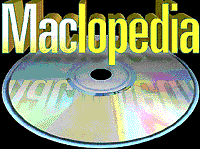
Atkinson, Bill
|
|
Bill Atkinson is a brilliant programmer whose influence is felt throughout the Macintosh community. Ironically, his professional career did not start in programming, but in chemistry. From chemistry, Atkinson began to specialize in neuro-chemistry, the chemistry of the brain. During this time, he became fascinated by the capabilities of computer graphics and began working on programming projects in his field. One of the best known projects involved the creation of a 3D computer graphic of the human brain. The results of that project showed up on the cover of the October 1978 issue of Scientific American. Shortly thereafter, Atkinson made the tough decision to pursue computers rather than chemistry and soon founded Synaptic Systems Corporation to create medical computer interfaces for use in hospital equipment. In March of 1978, Atkinson was recruited by Apple to focus on software for the Apple II. He convinced Apple to offer UCSD Pascal for the Apple II, which went on to be a hit among programmers and scientists and earned Apple a great deal of respect. One of Atkinson's greatest achievements lies at the very heart of the Macintosh. When working on the Lisa project, Atkinson created the software that manages arbitrary updating of regions of the screen. This software enables the Macintosh (and the Lisa) to gracefully handle overlapping windows while enabling each window to be updated independently. This task is more difficult than it seems. In fact, Atkinson believed he was recreating a part of the Alto system he had seen at Xerox PARC, when in actuality, Xerox had not been able to solve the problem of arbitrary update regions. Combined with a complete set of drawing routines, this code formed LisaDraw, the drawing package used by the Lisa. When LisaDraw moved to the Macintosh, it became QuickDraw, which remains a vital part of the Toolbox used by programmers today. To showcase the capabilities of QuickDraw, Atkinson wrote MacPaint, one of the original Macintosh applications. In its day, MacPaint was as revolutionary at the Macintosh itself. Its influence is seen in today's most sophisticated graphics packages. After the Macintosh was off the ground, Atkinson turned his talents to other projects. In 1988, Apple released his next revolutionary creation: HyperCard. HyperCard's graphical programming method, hypertext capabilities, and English-like programming language (HyperTalk) broke new ground once again. In 1990, Atkinson formed General Magic with Andy Hertzfeld and Marc Porat. General Magic is creating software for the next generation of computing, including the Magic Cap operating system used by personal digital assistants (PDAs) from Sony and others.
See Also
|